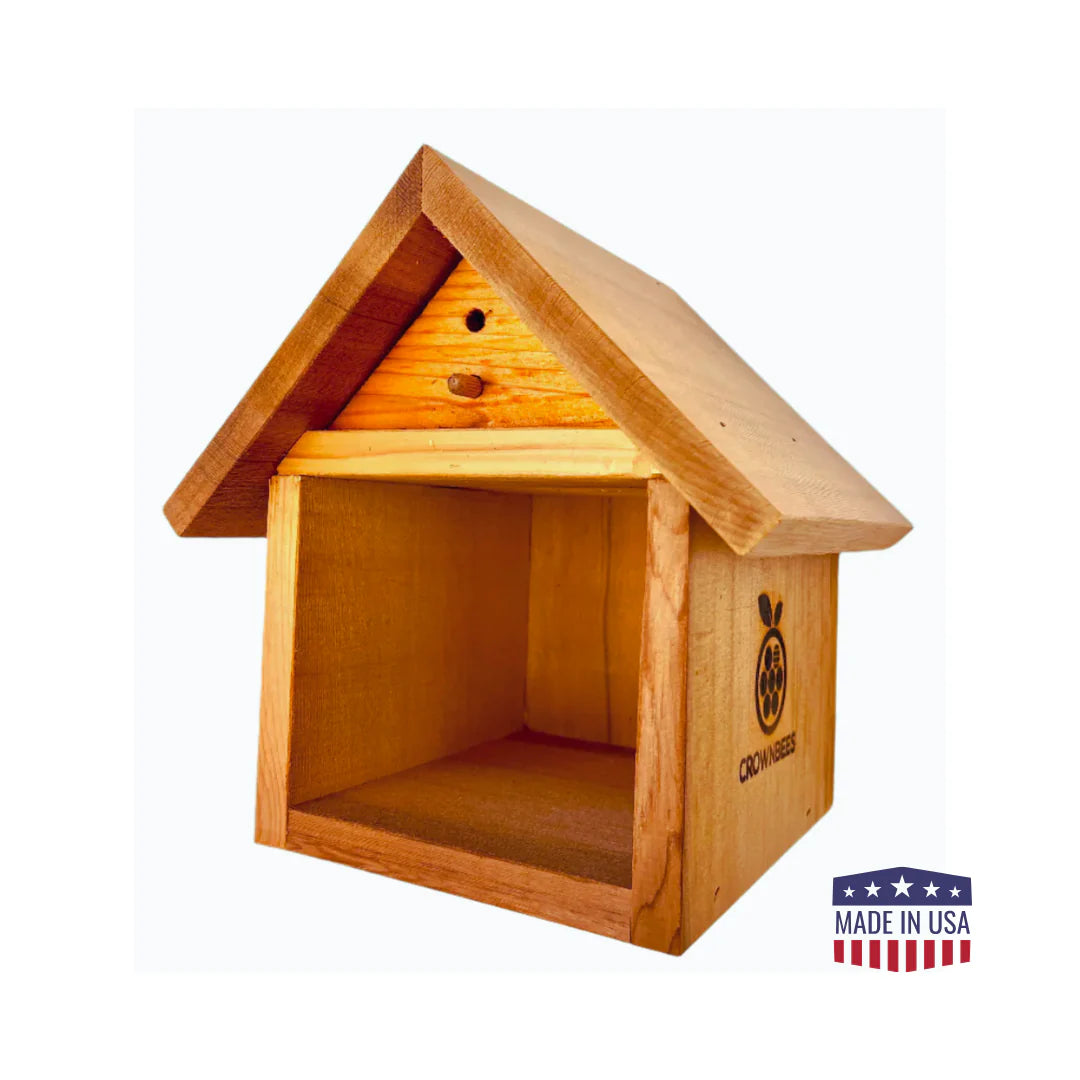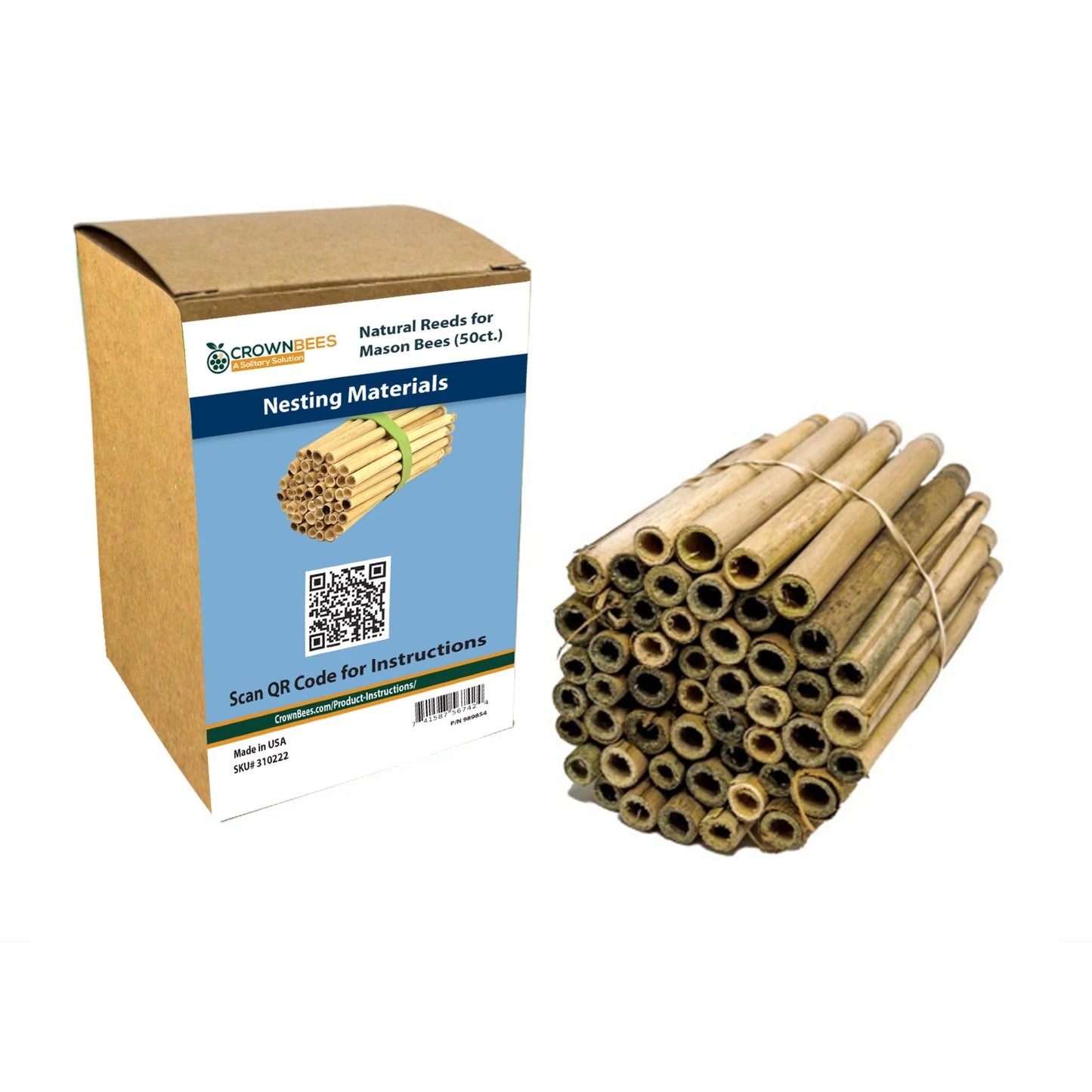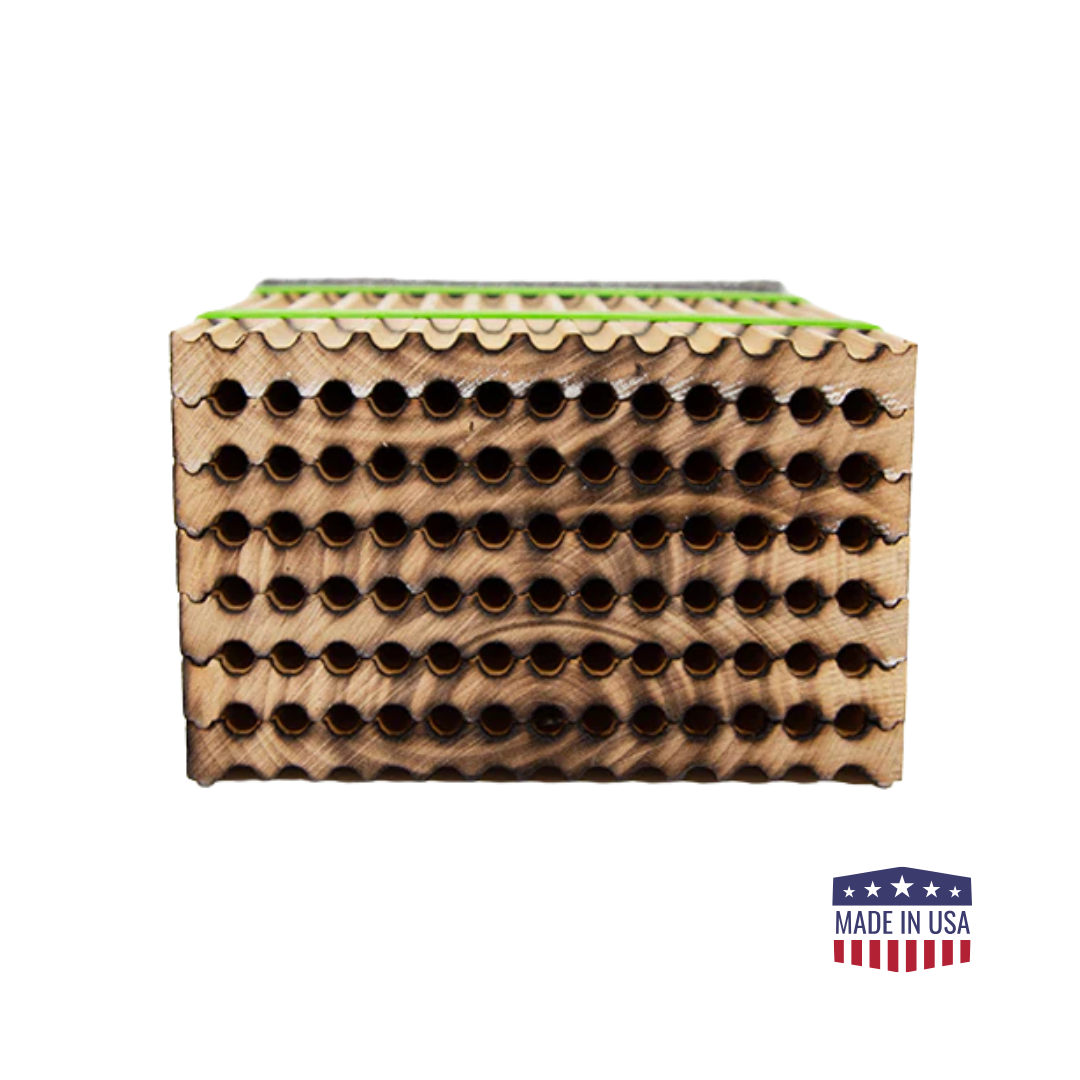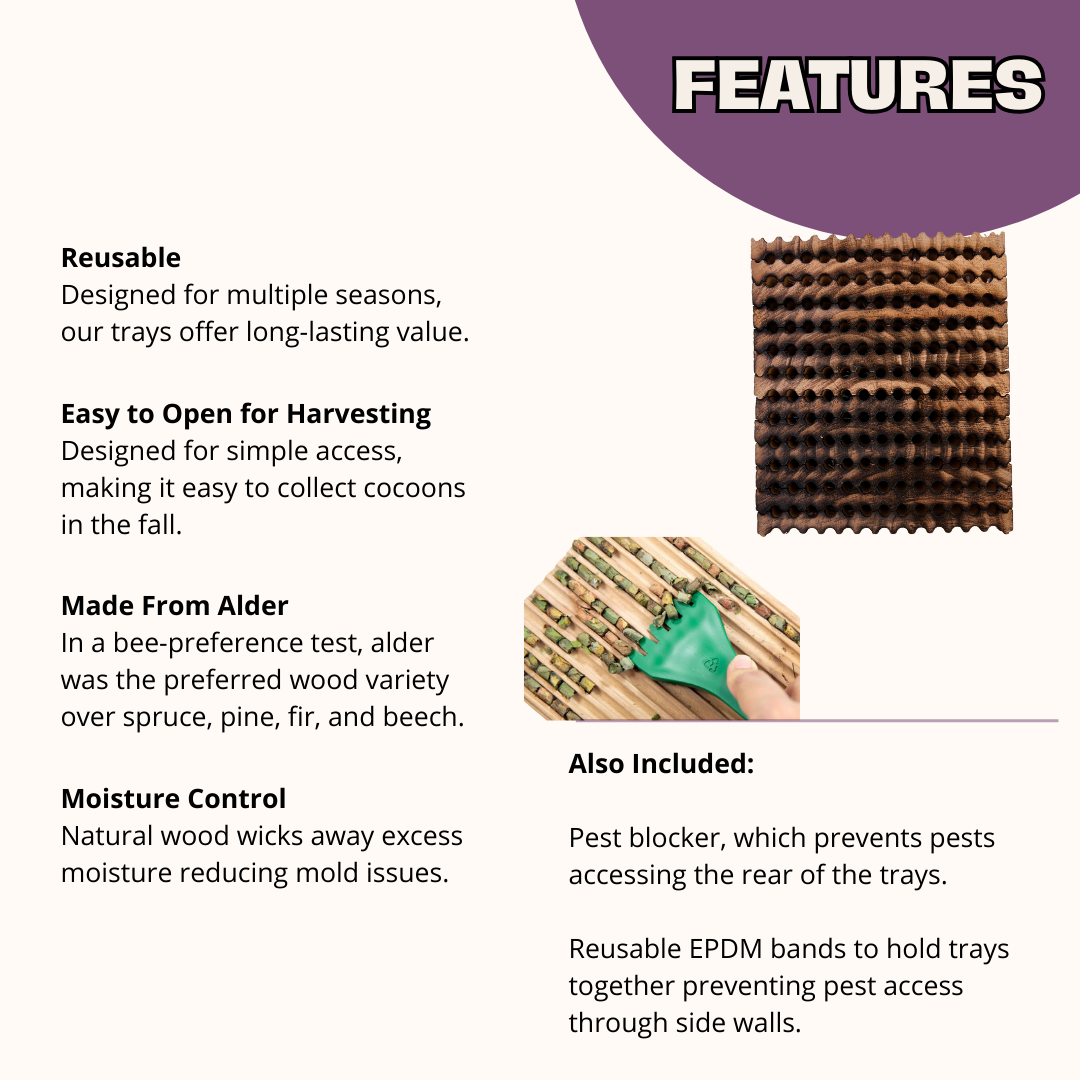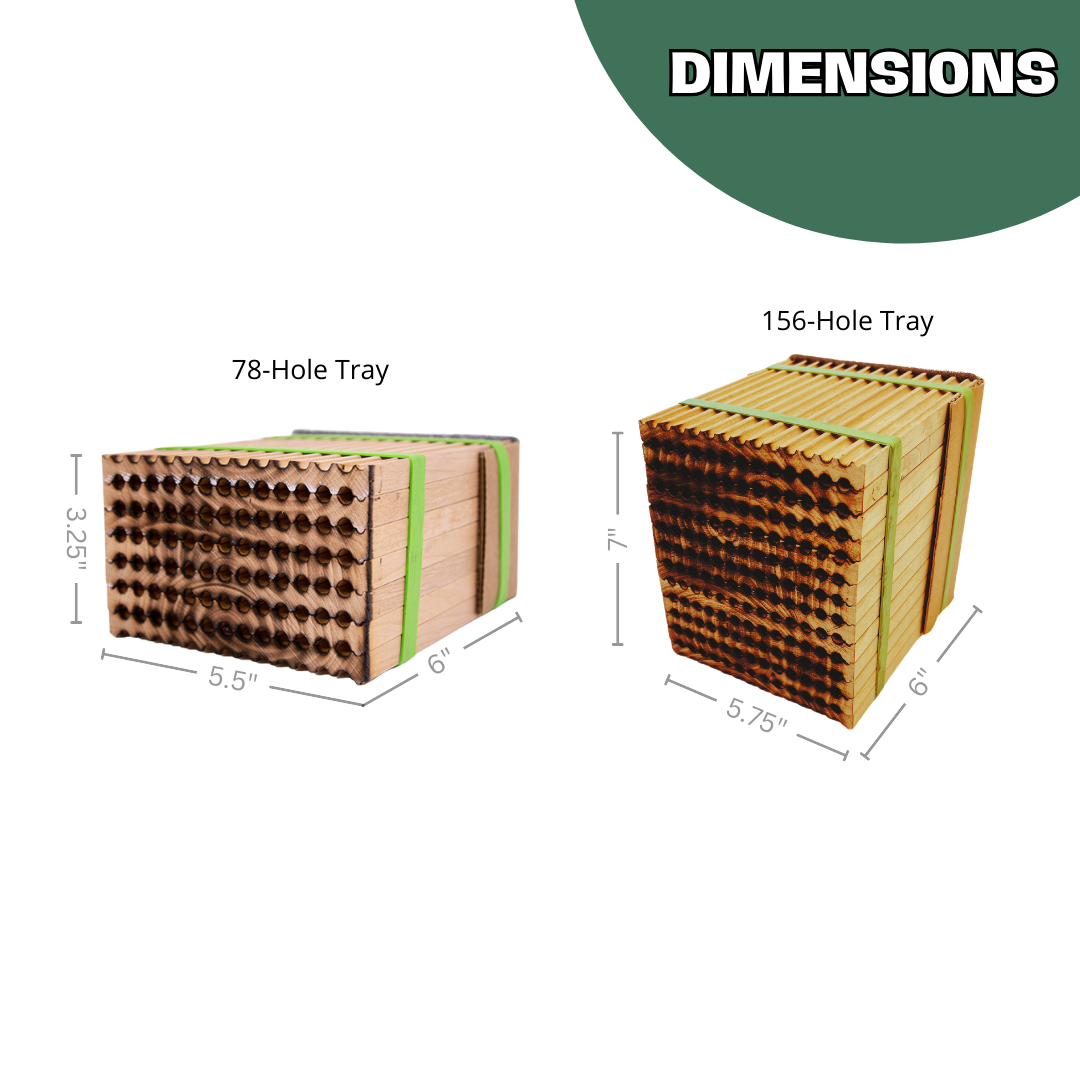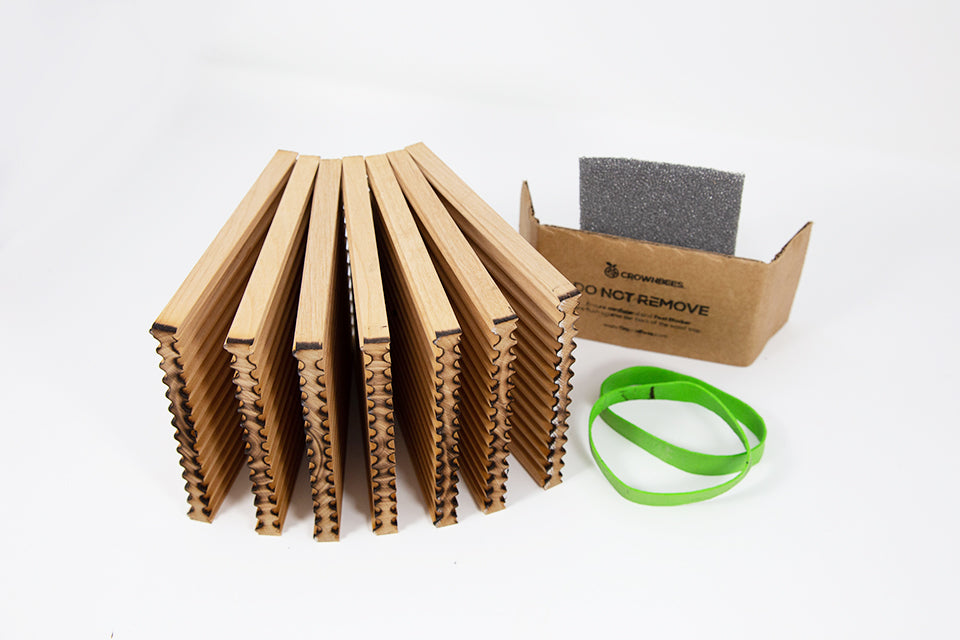Wood Trays: Perfect for Raising Summer Leaf Bees!
Durable, sustainable, and designed for ease of use, our Wood Trays provide the ideal nesting solution for raising summer leaf bees. Whether you’re a beginner or an experienced bee enthusiast, these trays make bee care simple and effective, ensuring the health and safety of your bees while supporting sustainable practices.
Why Choose Wood Trays?
- Eco-Friendly & Sturdy: Made from precision-cut Pacific Northwest alder, these trays are natural, reusable, and built to last.
- Bee Health & Comfort: Designed for optimal insulation and moisture control, they protect bee cocoons from extreme temperatures and excess moisture.
- Simple Harvesting: Easily harvest your cocoons in the spring to maintain healthy bee populations.
- Visual Guidance for Bees: Lightly burned patterns on the front help female bees locate their nesting cavities while preventing splinters that could harm their wings.
Product Features:
- Pest Protection: Side notches align trays perfectly and block pests from entering. Included pest-blocker fabric and cardboard backing protect the nest from behind.
- Reusable & Cost-Effective: Reduce costs with durable, long-lasting trays that can be used season after season.
- Natural Nesting Scents: Porous wood retains nesting scents, attracting bees to reuse the trays year after year.
Specifications:
- Hole Diameter: 6mm (perfect for alfalfa leafcutter bees).
-
Tray Sizes:
- 78-Hole Tray: 3.25” H x 5.75” W x 6” D (fits Cabin, Chalet, Villa, and Townhouse Bee Houses).
- 156-Hole Tray: 7” H x 5.75” W x 6” D (fits Tower Houses).
- DIY Tip: For DIY bee houses, ensure the roof extends a minimum of 3” beyond the tray dimensions.
- Made in USA
Choose Crown Bees’ Wood Trays for a sustainable, practical, and bee-friendly nesting solution! Designed to promote healthy and happy leafcutter bees, these trays are a reliable choice for raising pollinators in your backyard.
